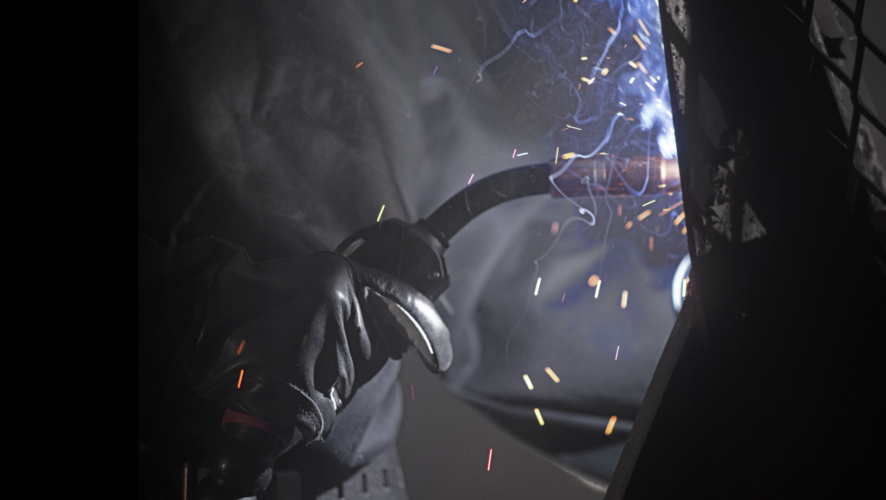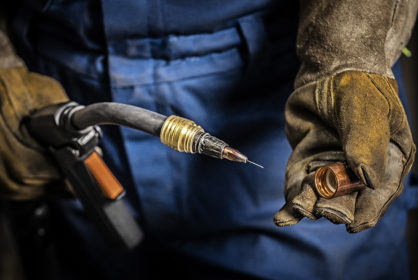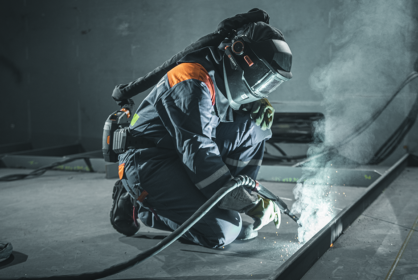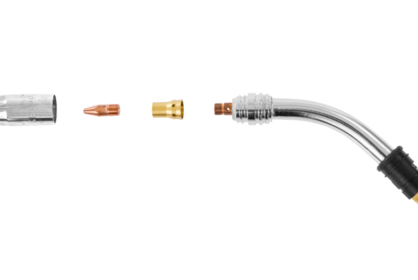This post is also available in: 


When it comes to welding gun performance, cooler is definitely better. But is there an optimal temperature for a water-cooled welding gun? And how do you keep the gas nozzle and contact tip spatter-free? Let’s find out by answering a few questions.
Change gas nozzle regularly to avoid overheating
Spatters get sticky when gas nozzle temperatures are too hot. If this happens, the nozzle and contact tip can’t do their job effectively – if they are covered in spatters, gas shield quality goes down and the chances of weak welds due to porosity goes up. To prevent this from happening, the nozzle must be changed more frequently.
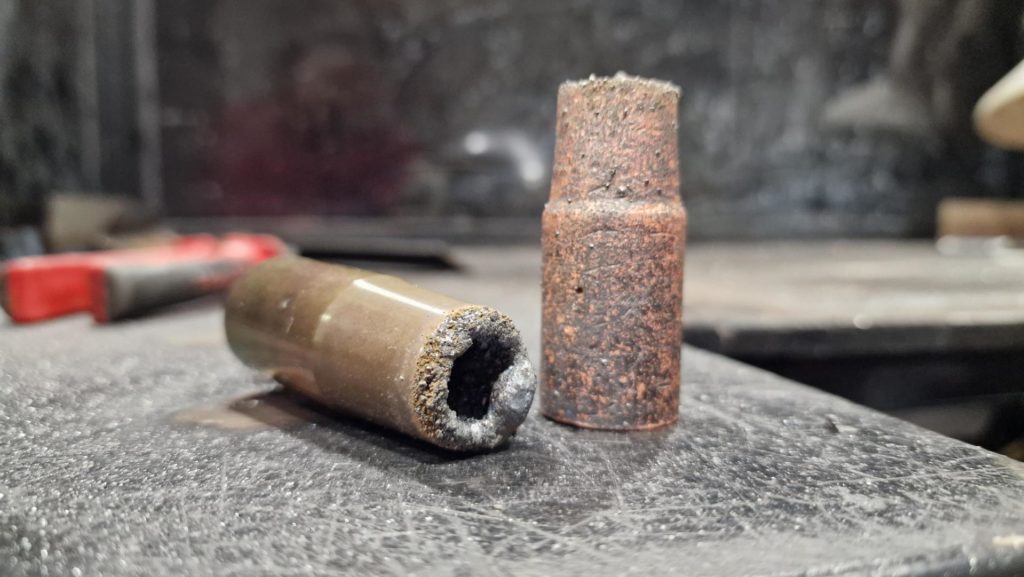
We know that high nozzle temperatures reduce performance, but it is also important to remember that this can negatively affect the contact tip. Even if the tip has effective cooling, an overheated nozzle creates a powerful oven-like effect on the tip that decreases its life while speeding up the use of consumables.
Measuring gas nozzle temperature is difficult, but not impossible
In the past, it has been difficult to effectively compare gas nozzle temperatures because welding applications and ways of working can be quite different. However, by doing a simulated welding arc with a fixed arc distance, we were able to reach a continuous welding simulation that allowed us to accurately compare gas nozzle temperatures.
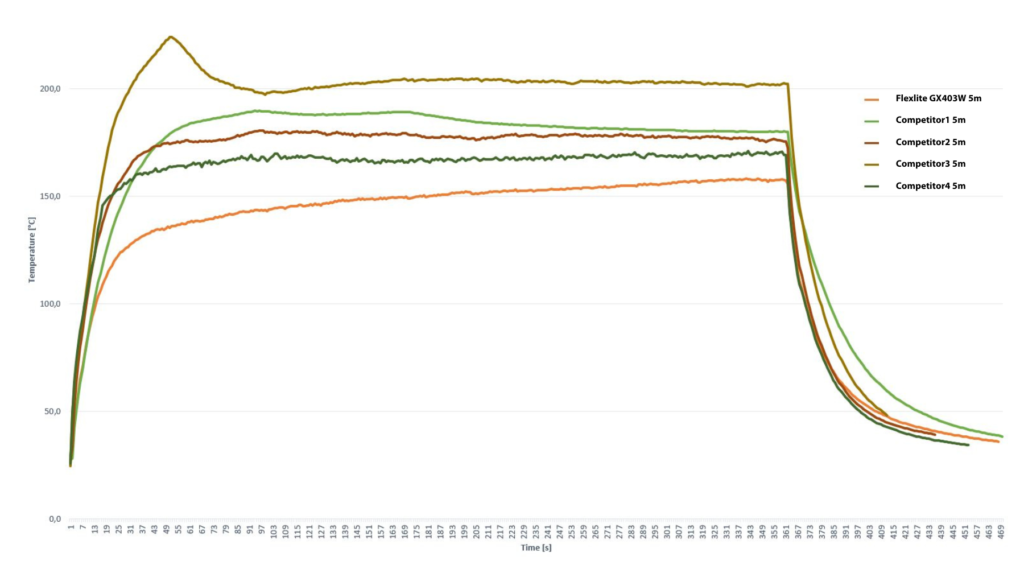
Ideal gas nozzle temperature eliminate spatters
The best way to eliminate spatters is to prevent them from sticking. But when gas nozzle temperatures begin to climb towards 200°, spatters become increasingly sticky, and it becomes difficult to remove them. This is important because too much spatter inside the gas nozzle directly causes the lack of a gas shield. So is there a temperature where spatters don’t stick? And can a gas nozzle maintain that temperature?
During our temperature test (see graph above), the nozzle on a Kemppi Flexlite GX remained at approximately 150° over a 6-minute period of use.
This is important because spatters are significantly less likely to stick at cooler temperatures. Also, when the nozzle temperature stays lower, consumables are used at a lower rate and contact tip performance remains optimized for smooth wire feeding.
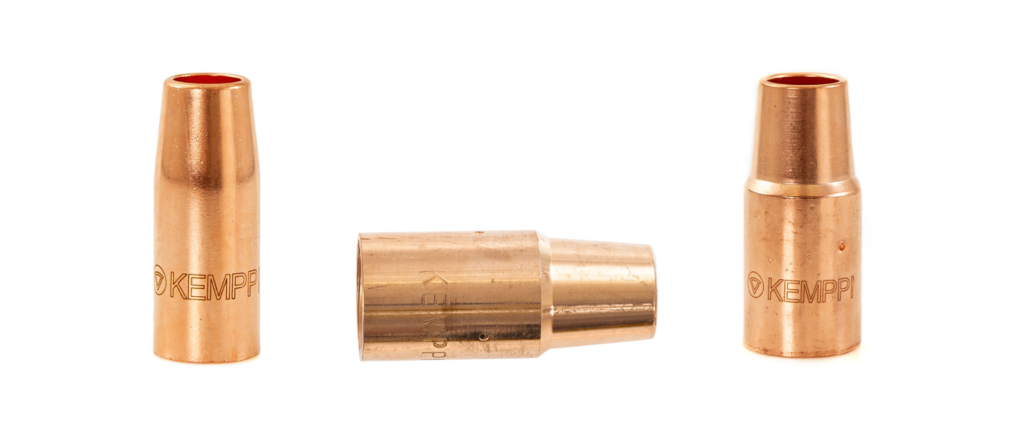
Preventing gas nozzle overheating saves you money
Yes! Eliminating spatters and preventing the contact tip from overheating have direct financial benefits. When a gas nozzle functions properly, fewer nozzle changes are required and less time is wasted on maintenance breaks. And in the long run, fewer gas nozzle changes means that less money is spent on purchasing new nozzles.
Excess use of consumables by a scratched and overheated tip also costs you money. But when the contact tip remains cool, consumables are used at a steady rate.
The Flexlite GX lowers total cost of ownership and improves productivity by:
- extending the life of your gas nozzle and contact tip
- reducing the use of consumables
- minimizing unnecessary maintenance breaks
Learn more about the Flexlite GX








